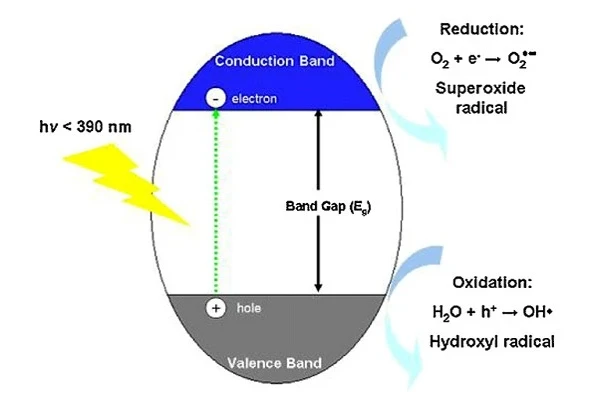
Part of the Text File
The contamination of drinking water sources with harmful organic substances has been recognized as a major problem worldwide. The removal of these contaminants using conventional water treatment processes such as adsorption, coagulation, oxidation, membranes separation, has been shown to be very difficult; therefore, an increasing number of new treatment technologies are being developed and evaluated. One such group of technologies is advanced oxidation processes (AOPs)
Table of Contents
1- Introduction
2- Advanced oxidation processes (AOP)
3- Advantagous of AOP
4- Disadvantagous of AOP
5- AOP Mechanism
6- Mineralization of organic pollutant in AOP
7- Types and classification of AOP
1-7- Non-photochemical (Dark) AOP
2-7- Photochemical AOP (photocatalysis)
1-2-7- Homogeneous Photocatalysis
2-2-7- heterogeneous Photocatalysis
8- Titanium dioxide (TiO2)
1-8- Methods of improving the performance of TiO2 photocatalysis
1-1-8- Morphological aspects
2-1-8- Heterogeneous photocatalysts
9- Types of heterogeneous photocatalysts
1-9- Metal/semiconductor heterogeneous photocatalysts
2-9- inorganic component /semiconductor heterogeneous photocatalysts
3-9- Semiconductor/semiconductor heterogeneous photocatalysts
10- Applications
دیدگاه خود را ثبت کنید